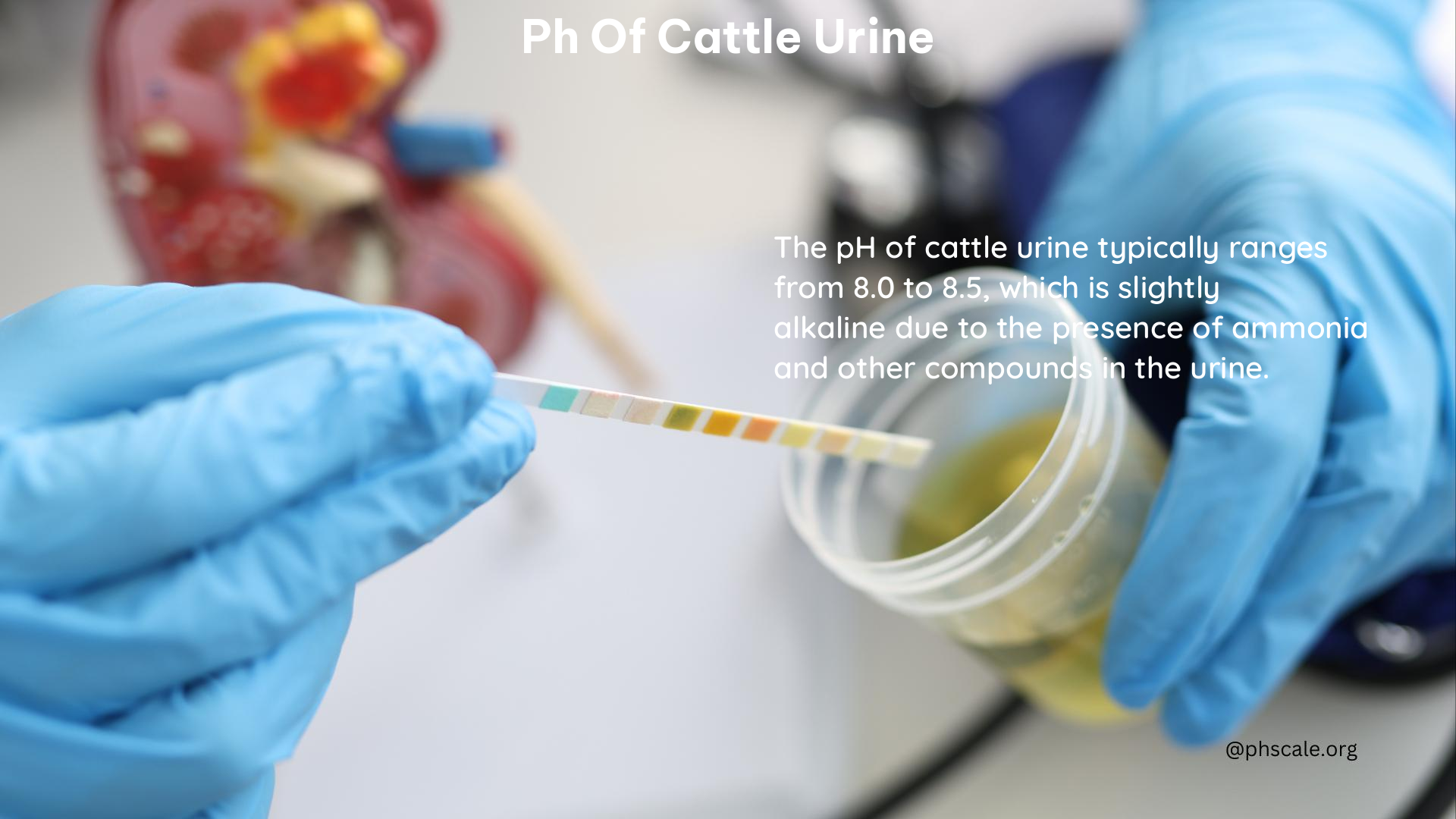The pH of cattle urine is a critical factor in understanding the overall metabolic health and well-being of these animals. It provides valuable insights into their dietary intake, acid-base balance, and potential health issues. In this comprehensive blog post, we will explore the normal range of urine pH in dairy and beef cows, the impact of diet on pH levels, and the factors that can influence this important parameter.
Normal Range for pH Levels in Cattle Urine
The normal range for urine pH in dairy cows is between 7.27 and 8.71, with a mean of 8.10. For beef cows, the normal range is slightly lower, falling between 7.42 and 8.12, with a mean of 7.73. These variations in pH levels can be attributed to differences in dietary intake, metabolic processes, and other physiological factors.
Diet and pH Levels in Cattle Urine

The diet of cattle plays a significant role in determining the pH of their urine. Cattle fed forage-based diets tend to have higher urine pH levels due to the increased intake of potassium, which enhances urine pH. Conversely, a negative dietary cation-anion difference (DCAD) diet, which includes anionic salts, can induce metabolic acidosis, leading to a more acidic urine.
| Diet Type | Typical Urine pH Range |
|---|---|
| Forage-based | 7.42 – 8.12 |
| Negative DCAD | 6.0 – 7.0 |
Understanding the relationship between diet and urine pH is crucial, especially for pre-fresh cows, as it can help prevent milk fever and other metabolic disorders.
Factors Affecting pH Levels in Cattle Urine
Several factors can influence the pH levels in cattle urine, including:
- Electrolyte Status: Urine pH is positively correlated with urinary potassium content and intake in dairy cows.
- Urine pH Variability: Factors such as proper mixing of the ration, adequate feed amounts, overcrowding, forage and commodity feed variability, drinking patterns, eating behavior, and recent urination before sampling can contribute to variability in urine pH.
Monitoring and Interpreting Urine pH
Regularly monitoring urine pH is essential for maintaining the overall health and well-being of cattle. Here are some key considerations:
- Sampling: Urine pH should be monitored regularly, ideally once a week, and consistently at the same time post-feeding to minimize variability.
- Target Ranges: For pre-fresh cows, a target urine pH range of 6.0 to 7.0 indicates moderate metabolic acidification, which is beneficial for calcium metabolism and health.
- Cut-off Values: A urine pH of 5.5 or less can indicate severe metabolic acidosis in dairy cows, which requires immediate attention and intervention.
Home Remedies and Solutions
If the urine pH levels in cattle are not within the desired range, there are several home remedies and solutions that can be implemented:
- Dietary Adjustments: Adjusting the DCAD of the diet to achieve a negative balance can help acidify the urine and prevent metabolic disorders.
- Monitoring and Consistency: Regularly monitoring urine pH and maintaining consistency in sampling and dietary management can help identify and address any issues.
Contaminants and Chemicals in Cattle Urine
It’s important to note that certain contaminants and chemicals can affect the pH of cattle urine, leading to inaccurate readings. These include:
- Alkaline Compounds: Alkaline compounds in the vagina can cause erroneous pH values if not properly collected.
- Potassium and Chloride: Variations in potassium and chloride intake can also affect urine pH levels.
Proper sample collection and handling are crucial to ensure accurate pH measurements and reliable data.
In conclusion, the pH of cattle urine is a crucial indicator of their metabolic health, and understanding its normal range, the impact of diet, and the factors that can influence it is essential for maintaining the overall well-being of these animals. By regularly monitoring urine pH and implementing appropriate dietary and management strategies, cattle producers can optimize the health and productivity of their herds.
References
- Goff, J. P. (2018). Invited review: Mineral absorption mechanisms, mineral interactions that affect acid-base and antioxidant status, and diet considerations to improve mineral status. Journal of Dairy Science, 101(4), 2763-2813.
- Lean, I. J., DeGaris, P. J., McNeil, D. M., & Block, E. (2006). Hypocalcemia in dairy cows: meta-analysis and dietary cation anion difference theory revisited. Journal of Dairy Science, 89(2), 669-684.
- Roche, J. R., Friggens, N. C., Kay, J. K., Fisher, M. W., Stafford, K. J., & Berry, D. P. (2009). Invited review: Body condition score and its association with dairy cow productivity, health, and welfare. Journal of Dairy Science, 92(12), 5769-5801.
